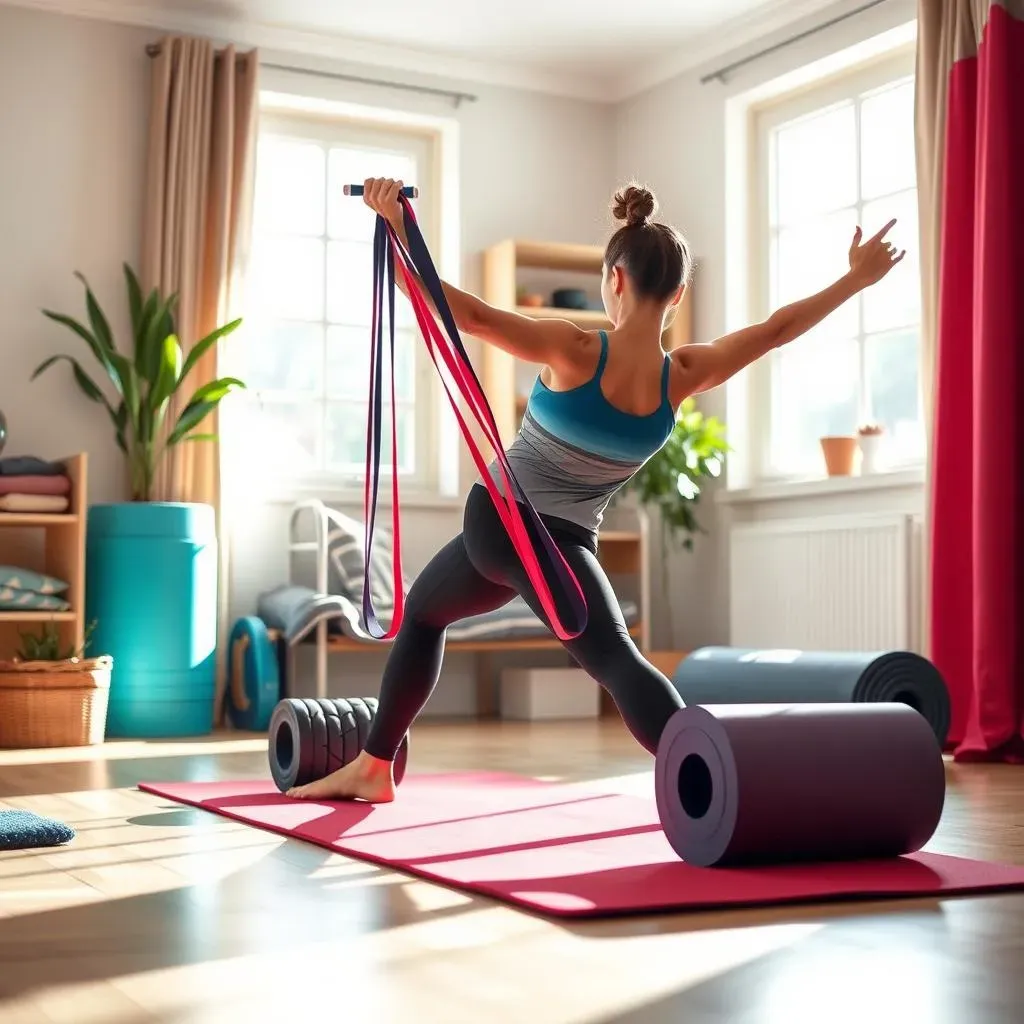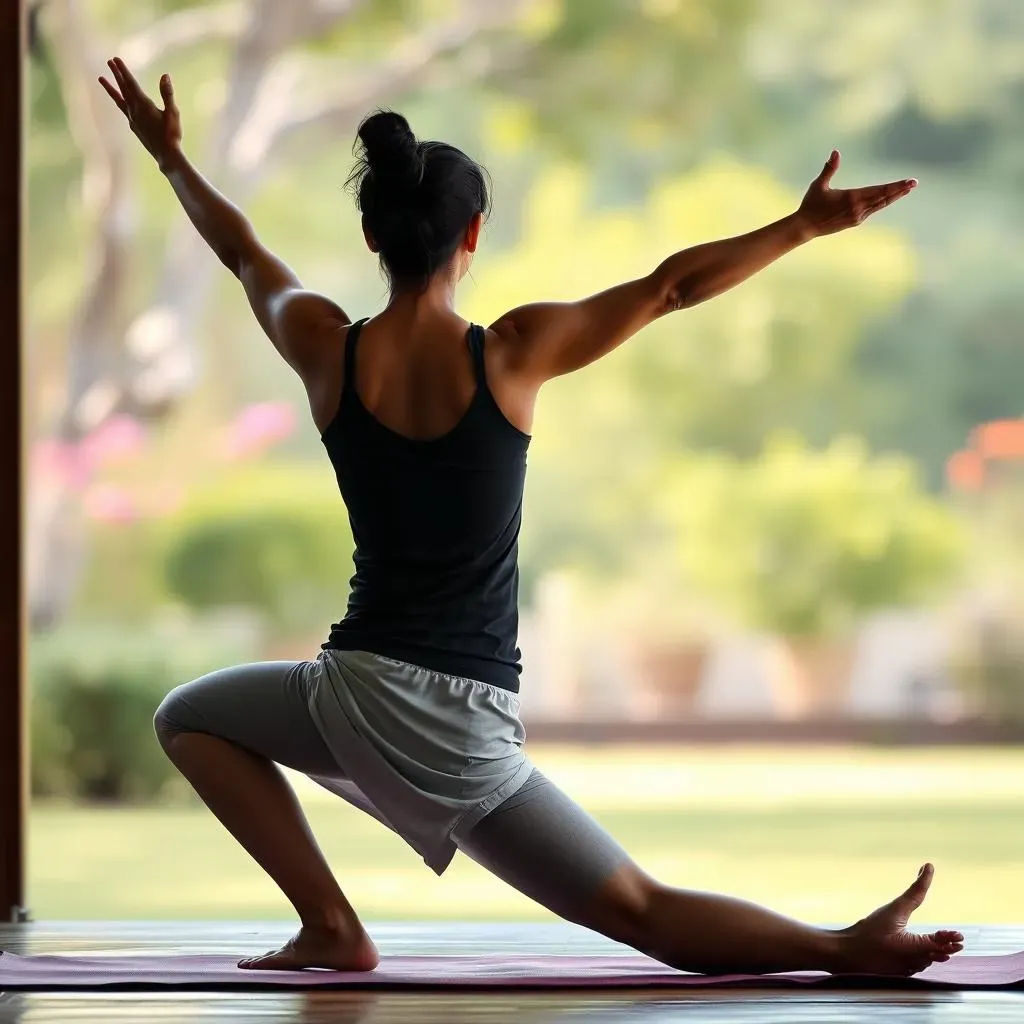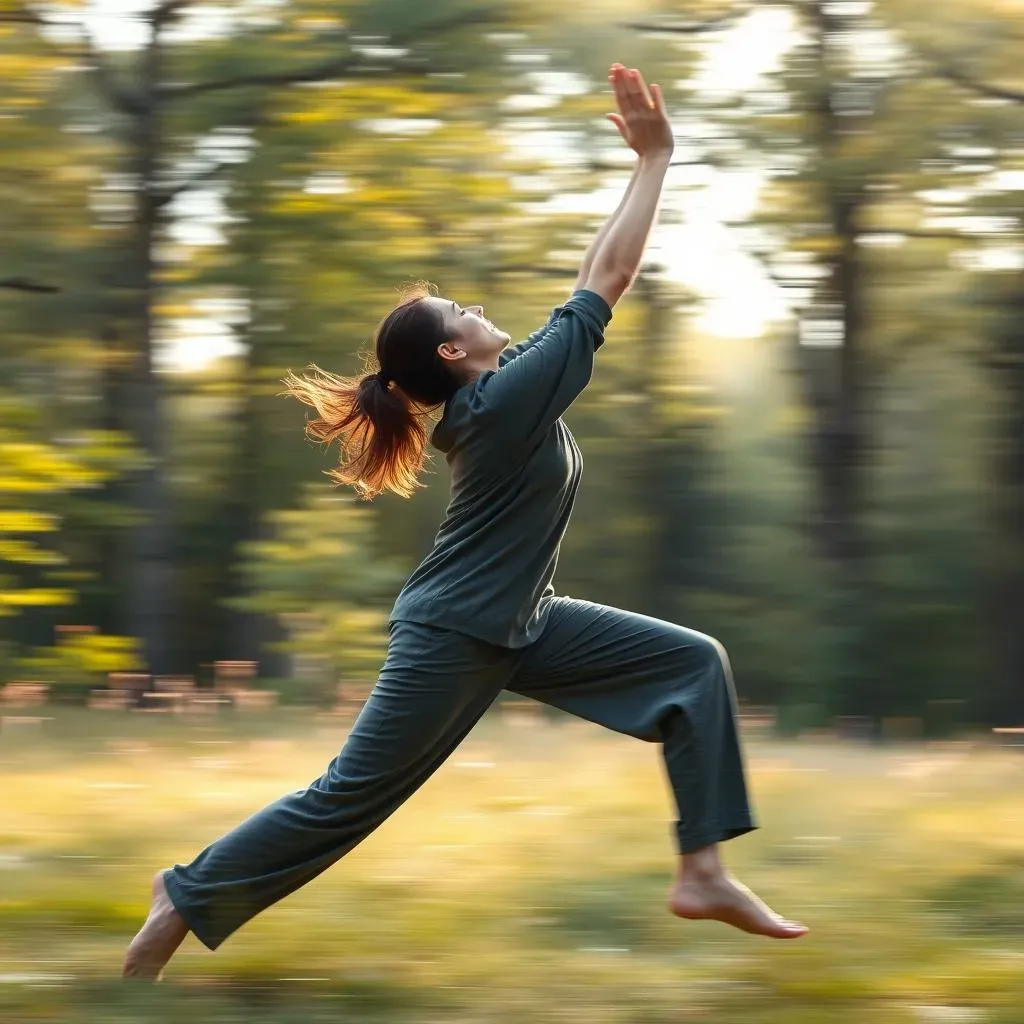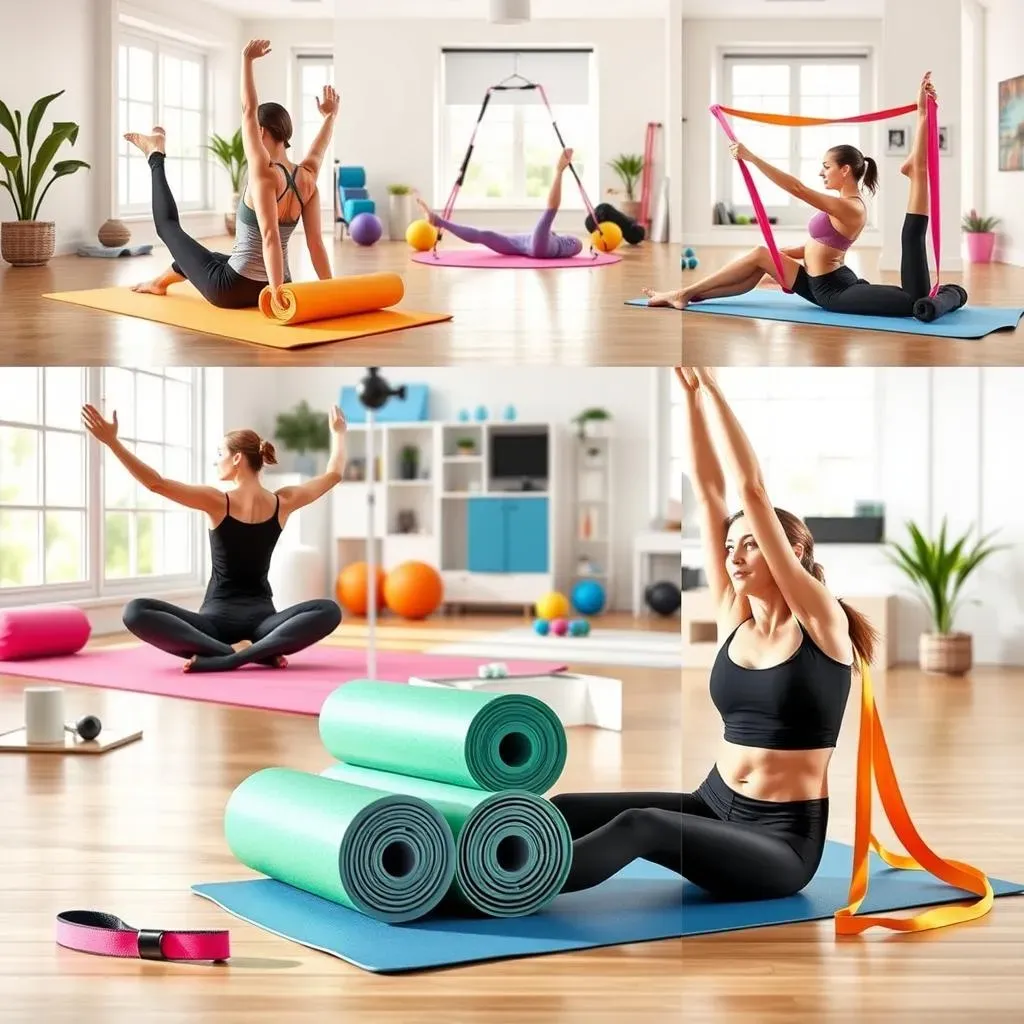Table of Contents
Ever felt like a rusty robot trying to touch your toes? You're not alone. Many of us struggle with flexibility, but it's not something we have to accept. Whether you're an athlete aiming for peak performance or just someone wanting to move more comfortably, improving your flexibility can make a huge difference. In this article, we'll explore the world of "home workout equipment for flexibility," breaking down the types of flexibility, why it matters, and how to use simple tools to boost your range of motion. We'll also look at what can hinder your flexibility, and provide a roadmap to help you move more freely. Get ready to say goodbye to stiffness and hello to a more flexible, mobile you. We will look at different equipment that can help you, and also discuss the factors that affect flexibility and how to improve it. We will also explore the benefits of flexibility and how to maintain it.
Types of Flexibility and Why It Matters

Types of Flexibility and Why It Matters
Static vs. Dynamic Flexibility
Alright, let's talk flexibility. It’s not just about how far you can bend over. There are actually two main types: static and dynamic. Static flexibility is like when you hold a stretch, say, touching your toes and hanging out there. It’s the range of motion you can achieve and hold. Dynamic flexibility, on the other hand, is about moving through that range. Think of a high kick – that’s dynamic flexibility in action. Both are super important, but they play different roles in your body's movement.
Imagine a rubber band. Static flexibility is how far you can stretch it before letting go. Dynamic flexibility is how quickly and smoothly you can stretch and release it.
Why Both Types Matter
So, why should you care about both static and dynamic flexibility? Well, static flexibility helps improve your overall range of motion, making everyday tasks easier and more comfortable. It can also help reduce muscle stiffness, which is great if you sit at a desk all day. Dynamic flexibility is crucial for athletic performance and functional movement. It allows you to move with power, control, and grace. It's the key to not pulling a muscle when you reach for that top shelf or when you are doing a new movement.
Type of Flexibility | Description | Real-World Example |
|---|---|---|
Static Flexibility | Range of motion you can hold | Touching your toes and holding the stretch |
Dynamic Flexibility | Range of motion you can achieve during movement | A high kick or a gymnastic routine |
Flexibility and Everyday Life
Think of flexibility as the unsung hero of your body. It's not just for gymnasts and dancers. Good flexibility makes everyday life easier. It's about being able to reach for things without pain, walk without feeling stiff, and generally move with more freedom. When you're flexible, you're less likely to get injured during physical activity. Whether you're chasing after your kids, carrying groceries, or just getting out of bed, having good flexibility makes a huge difference.
It's like having a well-oiled machine – everything runs smoother, and you're less likely to break down.
Home Workout Equipment to Enhance Your Flexibility

Home Workout Equipment to Enhance Your Flexibility
The Basics: Simple Tools, Big Gains
Okay, so you're ready to boost your flexibility, but you're thinking you need a whole gym setup? Nope. There's some fantastic, simple "home workout equipment for flexibility" that can do wonders. We're talking about things like resistance bands, which are basically giant rubber bands that come in different strengths. They're awesome for stretching because you can use them to assist or deepen stretches. Then, there are foam rollers. These are your best friend for releasing tight muscles. Think of them like a DIY massage therapist. You can roll out tension and knots in your muscles, making them more pliable and ready to stretch. And don't forget the humble yoga mat. It's not just for yoga; it provides a comfortable surface for all kinds of stretches and floor work.
These tools are affordable, take up very little space, and can be used in countless ways to improve your flexibility. I remember when I started, I was amazed at how something so simple like a band could make such a difference.
Stepping It Up: More Advanced Options
Now, if you’re feeling a bit more adventurous, or if you've been using the basics for a while, there are other options to consider. Ankle stretch aids and incline boards are great for targeting specific areas like your calves and hamstrings. They help you get deeper into stretches safely and effectively. A stretch strap is another great tool that can help you extend your reach and improve your flexibility in areas like your shoulders and legs. If you're really serious about your flexibility, you might want to look at a dedicated stretching machine. It allows you to perform very targeted stretches, often with adjustable angles and resistance for a more customized experience. These are great if you’re working towards something specific, like the splits or a deeper backbend.
Remember, it's not about having the most expensive or complicated equipment. It's about using what you have consistently and correctly. I think that sometimes people get caught up in the newest gadgets, but the key is consistency.
Equipment | Use | Benefits |
|---|---|---|
Resistance Bands | Assisted stretching, increased range of motion | Versatile, portable, affordable |
Foam Roller | Muscle release, improved circulation | Reduces muscle tension, enhances recovery |
Yoga Mat | Comfortable surface for stretching | Provides cushioning, non-slip surface |
Ankle Stretch Aids | Targeted calf and hamstring stretching | Deepens stretch, improves lower body flexibility |
Incline Boards | Calf stretches at varying angles | Improves range of motion, reduces risk of injury |
Stretch Straps | Extends reach, improves shoulder and leg flexibility | Assists in deeper stretches, versatile |
Factors Affecting Flexibility and How to Improve

Factors Affecting Flexibility and How to Improve
The Usual Suspects: What Limits Your Flexibility
Okay, so what's the deal with flexibility? Why are some people naturally bendy while others feel like they're made of concrete? Well, several things play a role. One big factor is your level of physical activity. If you're spending most of your day sitting, your muscles are going to get tight. It's like a rubber band that's been left stretched out – it loses its elasticity. Age also plays a part. As we get older, our tissues naturally become less flexible. It's not an excuse to give up on stretching, though; it just means we need to be more consistent with it. Genetics also play a role, some people are just naturally more flexible than others. But even if you're not naturally bendy, you can still make big improvements. Gender can also influence flexibility, with women generally having more flexibility than men due to differences in muscle composition and hormonal influences. But again, it’s not a hard rule; everyone can work to improve.
Think of it like a garden: if you don't tend to it, the plants will get overgrown and tangled. Your body is the same way – if you don't move it and stretch it, it's going to get stiff.
Turning the Tables: How to Improve Your Flexibility
So, how do we combat these flexibility foes? The good news is it's totally doable! First, regular stretching is key. It doesn’t have to be a long, grueling session. Even 5-10 minutes of stretching a few times a week can make a difference. The key is consistency. Think of it like brushing your teeth – you do it every day, and it pays off in the long run. Also, make sure to warm up your muscles before you stretch. A little light cardio, like a quick walk or some jumping jacks, can help get your blood flowing and prepare your muscles for stretching. And remember to stretch all your major muscle groups: your legs, arms, back, and shoulders. It's all about balance. Don't forget to listen to your body; it's not about pushing through pain. Stretching should feel like a gentle pull, not a sharp stab. If you feel pain, back off a bit, you can always try again the next day. And, finally, make sure you are using the right equipment, your "home workout equipment for flexibility" will make a huge difference.
It's not about becoming a contortionist overnight, it's about making small, consistent improvements over time. I've seen people make amazing transformations just by sticking with it.
Factor | Impact on Flexibility | How to Improve |
|---|---|---|
Physical Activity | Lack of activity leads to stiffness | Regular movement and stretching |
Age | Tissues become less flexible over time | Consistent stretching and mobility work |
Genetics | Some people are naturally more flexible | Focus on your personal progress |
Gender | Women tend to have more flexibility | Train consistently and appropriately for your body |
The Benefits of Flexibility and How to Maintain It

The Benefits of Flexibility and How to Maintain It
The Payoff: Why Bother with Flexibility?
Alright, so we've talked about what flexibility is and how to get it, but why should you even care? Well, the benefits are pretty amazing. First off, flexibility is a key player in injury prevention. When your muscles are tight, they're more prone to strains and tears. Think of it like trying to bend a cold, stiff piece of plastic; it's much more likely to snap than a warm, flexible one. Good flexibility also enhances your athletic performance. Whether you’re into running, weightlifting, or just chasing after your kids, better flexibility allows you to move more efficiently and powerfully. It's like having a wider range of motion to work with, which translates to better performance and fewer injuries. And let's not forget the everyday stuff. Being flexible makes daily tasks easier and more comfortable. It's about being able to reach for that top shelf without pulling a muscle or getting out of bed without feeling like a rusty tin man.
It's like giving your body a tune-up, making sure all the parts are working together smoothly and efficiently.
Staying Flexible: The Long Game
So, you've put in the work to get more flexible, now what? The truth is, flexibility isn't a one-and-done deal; it's something you have to maintain. Consistency is the name of the game. Make stretching a regular part of your routine, even if it's just for a few minutes each day. It's like watering a plant; you can't just water it once and expect it to thrive. Also, don't be afraid to mix things up. Try different types of stretches, experiment with different pieces of equipment, and find what works best for you. And remember to listen to your body. If something feels painful, back off a bit. It’s about gentle, consistent progress, not pushing through pain. Finally, be patient with yourself. Flexibility takes time and effort, but the payoff is worth it. And don't forget that your "home workout equipment for flexibility" will make a huge difference in the long run. Consistency is the key.
It's like building a house; you need to keep making sure the foundation is solid and the structure is well maintained. Flexibility is the foundation of your body's movement.
Benefit | Description | Real-World Impact |
|---|---|---|
Injury Prevention | Reduces the risk of strains and tears | Fewer injuries during physical activity and daily tasks |
Enhanced Athletic Performance | Improves movement efficiency and power | Better results in sports and workouts |
Easier Daily Tasks | Makes everyday movements more comfortable | Less pain and stiffness in daily life |
Improved Posture | Helps to align the body correctly | Reduces back and neck pain |
